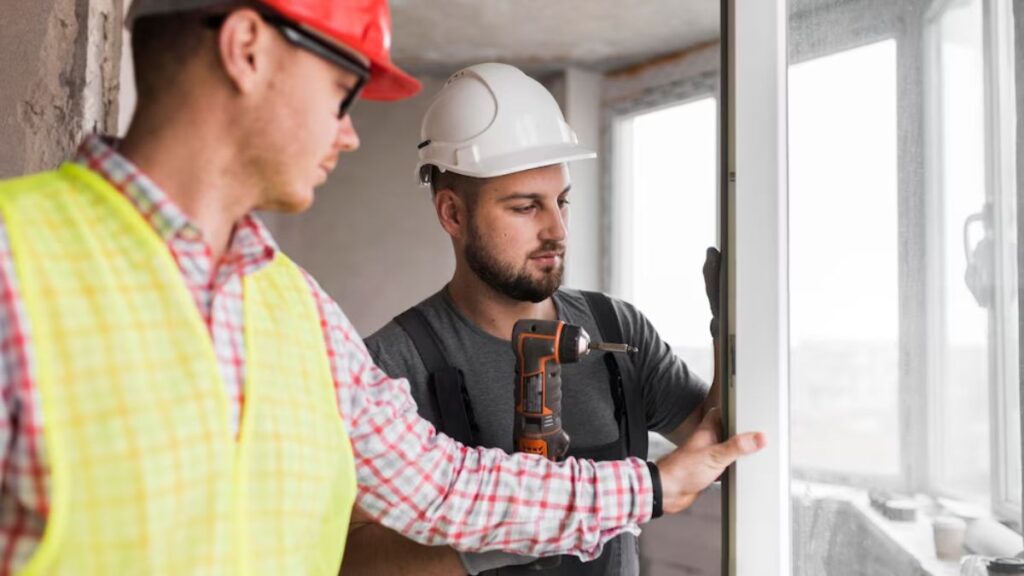When planning a full-scale home renovation, homeowners often prioritize kitchen updates, new flooring, or modernized bathrooms. However, one critical component that’s frequently overlooked is the garage door. As a prominent exterior feature, a garage door holds aesthetic, practical, and financial weight in a renovation project. Not only does it serve as one of the main points of entry, but it also contributes significantly to a property’s curb appeal and security. We will explore how garage door installation complements the larger vision of a home upgrade, why it deserves a key place in renovation planning, and how it offers lasting value that transcends simple functionality.
Why Your Garage Door Should Be Part of Your Home Renovation Plan
Aesthetic Continuity Matters in Exterior Renovations
A cohesive home design doesn’t stop at paint colors or siding materials—it stretches across every visible component, including the garage door. An outdated, dented, or rusting garage door can undo the impact of a beautifully renovated facade. When the rest of a home gets modern windows, fresh landscaping, and new exterior trim, a mismatched garage door can feel jarring. Investing in garage door installation that matches your updated home’s material, color, and style helps maintain its architectural integrity. Whether your renovation leans towards a contemporary, farmhouse, or traditional style, today’s garage doors come in an array of designs that echo and support the overall theme. Glass-paneled garage doors pair perfectly with minimalist renovations, while carriage-style doors are more suitable for rustic or colonial looks. This visual harmony adds perceived value and curb appeal, two critical elements when renovating for resale.
Upgraded Garage Doors Improve Energy Efficiency
In a full-scale renovation, homeowners often upgrade windows, install insulation, and seal air leaks to improve energy performance, but what about the garage? Especially in homes with attached garages, energy loss through this space can be significant. An old, uninsulated garage door can allow hot or cold air to transfer easily into adjacent living spaces, affecting indoor temperatures and increasing utility costs. Modern garage doors often include insulated panels with higher R-values, effectively sealing off the garage and supporting broader energy-saving goals. This becomes particularly important if the garage is used for more than just car storage, such as a workshop, home gym, or laundry area. Integrating an insulated garage door into your home renovation can enhance overall comfort and make the home more appealing to future buyers who are concerned with efficiency and sustainability.
Smart Technology Integration Aligns With Modern Home Systems
Technology has transformed nearly every aspect of home living, and garage doors are no exception. Many modern systems include smart openers that integrate with home assistants, security systems, and smartphones. During a renovation, when a home’s wiring, outlets, and security infrastructure are being updated, it makes sense to install a garage door that can be integrated seamlessly into that system. This allows for remote operation, automatic closing timers, and alerts if the door is left open. Safety features such as motion detection, automatic lighting, and secure PIN access further align with modern homeowner expectations. Including a smart garage door in your home upgrade makes the property not only more convenient but also safer and more in tune with contemporary lifestyles.
Improved Safety and Security Reinforce Renovation Goals
One core goal of any renovation is to make a home more secure, particularly when the structure is older or has outdated entry points. A flimsy, aged garage door can be a significant vulnerability, providing an easy entry point for intruders or wildlife. Many renovation projects include upgrades to locks, cameras, and door frames—so why leave the garage door behind? New garage doors are constructed with enhanced locking mechanisms, reinforced materials, and tamper-resistant features that elevate home security standards. Reinforcing the garage as part of a broader renovation ensures that all points of access meet modern safety standards. If the garage is connected directly to the home or used for storing valuable tools and equipment, this security boost becomes even more important.
Added Resale Value Makes the Investment Worthwhile
Even when homeowners renovate for personal enjoyment, resale value remains a motivating factor. Prospective buyers today are increasingly savvy, noticing inconsistencies or cut corners. An old or mismatched garage door amidst an otherwise modernized property can raise questions about what else was left untouched. On the other hand, a sleek, new garage door presents a polished, complete picture that enhances the perceived quality. According to many home improvement surveys, garage door replacements consistently rank among the home upgrades with the highest return on investment. When potential buyers tour a home, the garage door is often one of the first things they see, making it a high-impact detail that can support or sabotage a sale. Including it in a renovation not only enhances the project’s aesthetic appeal but also strengthens the property’s market competitiveness.
A well-thought-out home renovation includes every visible and functional component, from the living room layout to the exterior facade. The garage door, often viewed as purely utilitarian, plays a more significant role than it is given credit for. When integrated into a broader renovation strategy, it enhances aesthetic appeal, contributes to energy efficiency, complements smart home systems, improves safety, and boosts resale value. Ignoring the garage door risks undermining the entire investment, while giving it attention pays off in both style and substance.







